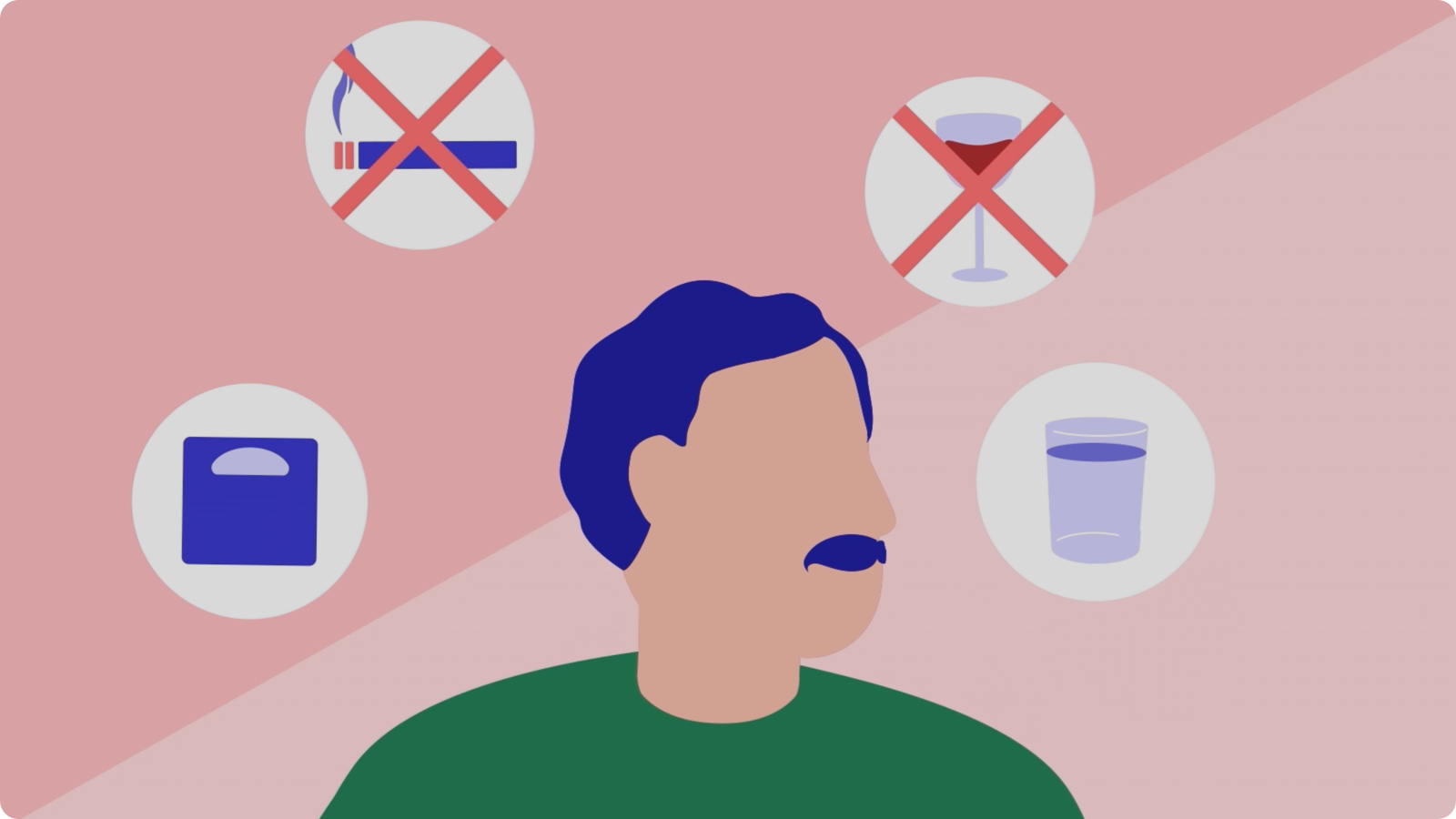Medication2,3
Some people may be prescribed medication to help prevent another DVT or PE, especially if you have persistent risk factors. In this case, the doctor or healthcare team will explain how the medication can help and how it should be taken.
How long you will need to take your medication will depend on your health and circumstances, so make sure you discuss this with your doctor. In many cases, the doctor or healthcare team might decide to extend your current anticoagulation treatment.
If you have been prescribed medication to help prevent another DV or PE, make sure you keep taking it until your doctor or healthcare team ask you to stop to stop.3
Keep moving1-5
As you probably know, not moving around can put you at greater risk of developing another DVT and possibly a subsequent PE, because your blood doesn’t circulate around your body as much. Try to avoid sitting still for extended periods – get up and have a walk around every couple of hours if you can.
If you are unable to move about – for example, if you are recovering from surgery – try to keep your legs moving if you can. You can still do this in a sitting position or lying down, if needed.
Useful tips:2,4,5
- If you are seated for long periods – for example on a flight or at your desk – you can raise your toes and heels alternately, keeping the rest of your foot flat on the floor. This helps to boost the circulation in your lower legs
- If you can’t move about, try wearing flight socks or compression stockings (You may be given these at the hospital if you have recently had an operation.)
- Drink plenty of water and fluids. This helps to keep your circulation going
- If you are sitting down, try to avoid crossing your legs as this can restrict the blood flow to your lower legs
Take regular exercise1,2,4
If you are able to be more active, try to take some exercise every day, ideally. The amount and type of exercise that is right for you will depend on your age and general health. Your doctor or healthcare team can give you advice on what is right for you.
Useful tips:
- If you can manage it, going for a daily walk is a good idea. Try to get into the habit of doing this regularly if you can
- If you can’t move about easily, you can keep your legs raised – try putting them on a pillow when you are in bed or on cushions when you are sitting down
Stay healthy1,4,5,7
Looking after your general health is a good idea at any time. If you are overweight, now might be the right time to think about losing weight. Your healthcare team can offer you guidance and advice about how you can do this safely, so have a chat with them. Stopping smoking and drinking alcohol can also help. Your healthcare team can offer advice and help with this too.
Useful tips:
- Eating a healthy, balanced diet
- If you are overweight, try to cut down the amount of sugar (fizzy drinks, cakes, sweets and biscuits) and fat (chips, crisps, fried foods, meat with a lot of fat) you eat. If you cut out one item per day, it will make a difference
- If you smoke, you might want to think about stopping. Again, your healthcare team will be able to support you through this and offer helpful advice as well as encouragement
- Avoid drinking a lot of alcohol – this also has the advantage of being good for your general health and helping you to lose weight. Try to have a few days each week when you don’t drink any alcohol
What to do if you are worried
If you find that you are becoming worried about developing another DVT or PE, you might find it helpful to talk to your doctor or healthcare team. They will be able to discuss your concerns and offer reassurance and support as well as practical help and advice.
If in doubt, ask your doctor
If you are still concerned that you, or someone you know, could develop another DVT or PE, you can discuss this with your doctor or healthcare team.
If you would like help or support, for example with making changes to your everyday life and activities, your healthcare team will be able to advise you.
Questions you might want to ask your healthcare team
- I am concerned about having another DVT – is there someone I can talk to?
- What types of exercise are suitable for me?
- I am worried because I can’t walk very well. What can I do to keep moving?
- I am overweight. What help is available so that I can lose weight safely?
